Atahualpa: The Inca Lord Who Lost an Empire
posted on September 21st, 2014 in Incas, Peru
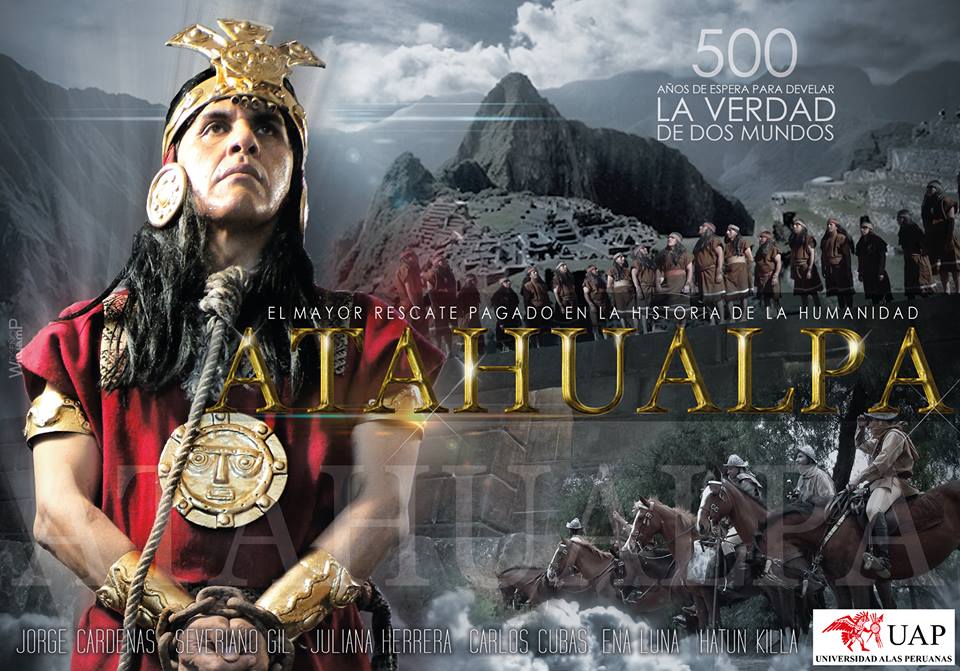
The Inca Emperor, Atahualpa
Atahualpa: Emperor of the Incas
Note: Atahualpa, lord of the Incas, was captured in Nov of 1532 by 168 Spaniards. Atahualpa was captured in the Inca town of Cajamarca, in what is now northern Peru. The following is an extract from The Last Days of the Incas:
“Most Inca accounts state that after [Atahualpa’s father] Huayna Capac‘s death, the latter’s son Huascar was crowned as emperor in Cusco, a thousand miles to the south. Another son, Atahualpa, remained in Quito, meanwhile, which Huayna Capac had made into an ancillary capital during his constant campaigns in what is now Ecuador. Born from different mothers, Atahualpa and Huascar were half-brothers.
(more…)
Pachacutec: Incan Emperor Who Created Machu Picchu
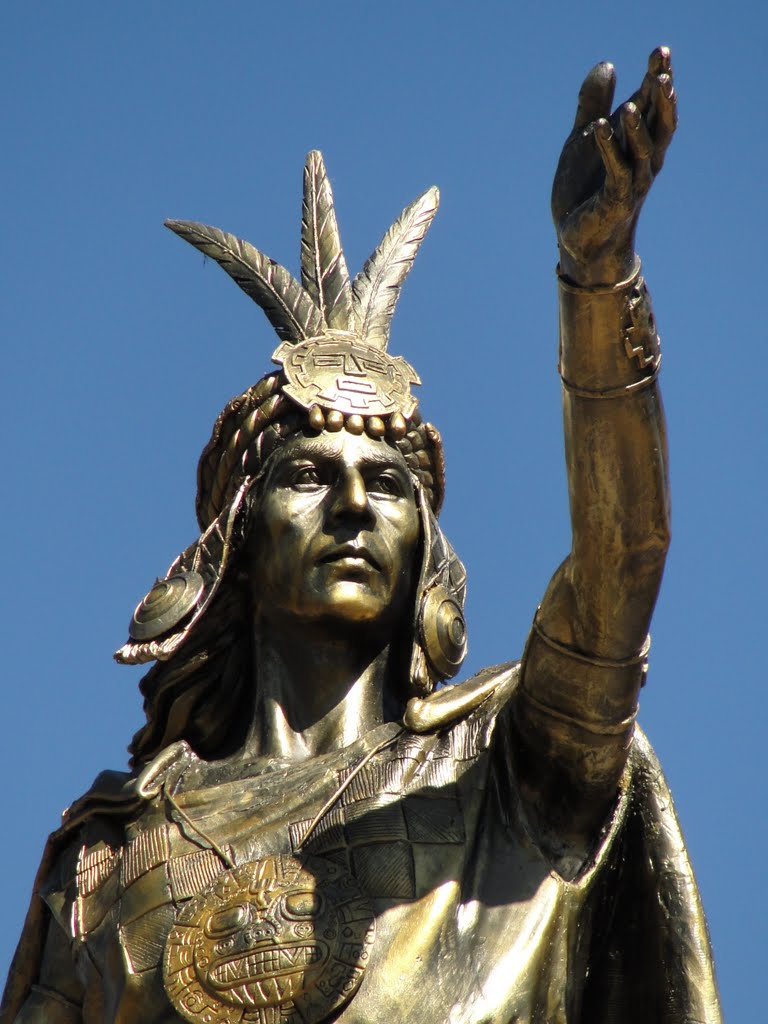
Pachacutec: The Incan Emperor Who Built Machu Picchu
By Kim MacQuarrie
(Excerpt from the book, Machu Picchu: Song of Stone)
According to Inca oral history, in the early part of the 15th century an Inca king arose who would not only revolutionize the entire Andean world but who would also create some of the finest architectural monuments ever known. At the time, the Incas lived within a small kingdom centered around the valley of Cuzco, one of many such small kingdoms in the Andes and on the coast. The Incas told the Spaniards that, at the time, they were led by an old Inca king named Viracocha Inca. Faced with an approaching army from the powerful kingdom of the Chancas, the Inca ruler fled, leaving his adult son, Cusi Yupanqui, behind. The latter quickly took charge, raised an army, and somehow miraculously defeated the invaders. Cusi Yupanqui then deposed his father, arranged for his own coronation, and changed his name to Pachacutec, a Quechua word that means “earth-shaker” or “cataclysm,” or “he who turns the world upside down.” The name was a prescient one, for Pachacutec would soon turn the status quo of the Andes entirely upside down.
(more…)
Gastón Acurio: Peru’s Celebrity Chef
posted on August 2nd, 2014 in Food, Peru
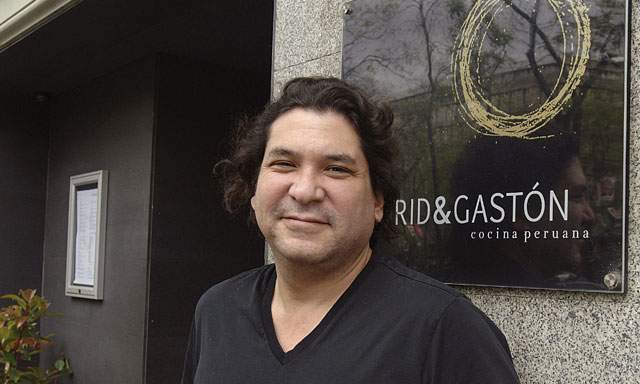
Master chef Gastón Acurio in front of his flag-ship restaurant, Astrid & Gastón in Lima, Peru
July 23, 2014
The Washington Post
In the kitchens and cafes of the food-crazed Peruvian capital, history is divided into two epochs: Before Gastón Acurio and After Gastón Acurio.
The BG era was a time of darkness, confusion and ketchup.
Then Gastón Acurio opened his first restaurant in 1994, and began remaking gritty Lima into the culinary capital of South America.
(more…)
Peru President Petitioned to Protect Uncontacted Tribe
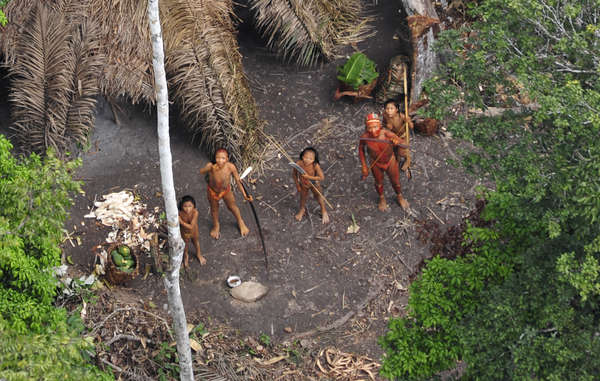
(Above: Photo of an uncontacted tribe near Peru-Brazil border in 2010; photo credit: Survival International)
Ahead of the visit of Peru’s President Ollanta Humala to Germany for a climate conference this week, Survival International, the global movement for tribal peoples’ rights, has written to the President urging him to protect the lands of highly vulnerable uncontacted tribes in the Amazon rainforest from illegal logging and drug trafficking.
(more…)
How Inca Postal Runners Delivered Their Emperor Fresh Fish From the Sea
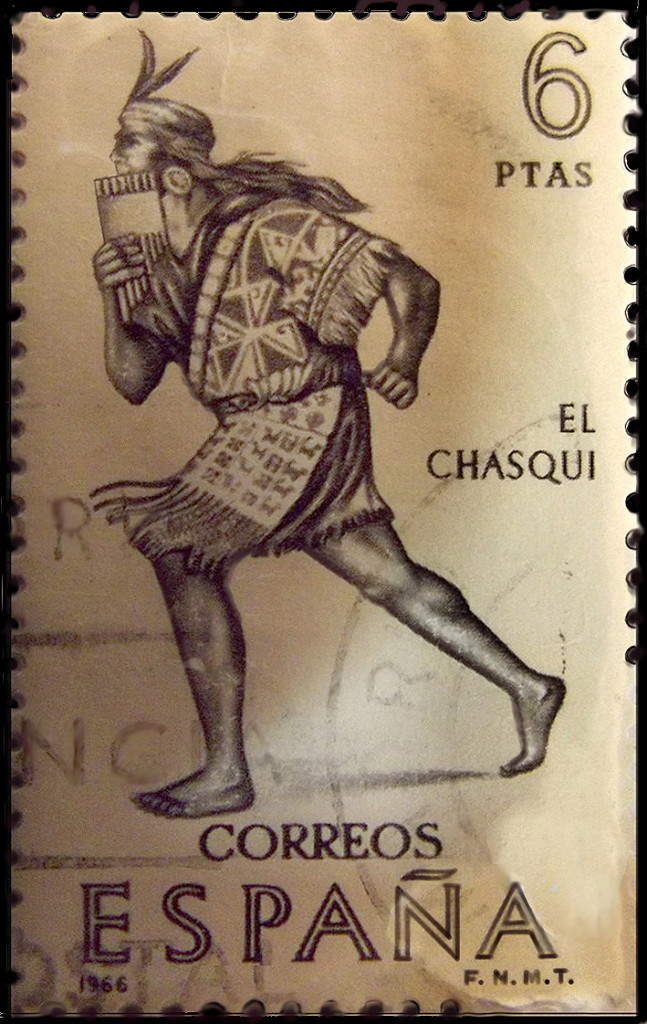
Inka Chasqui runner on Spanish postal stamp
Note: the Incas built one of the greatest roadways in the world, called the Qhapaq Ñan, or “beautiful roadway.” It stretched for more than 2,500 miles in length, from Colombia to mid-Chile, covered more than 26,000 miles of roadway. A tiny stretch of that roadway, which ends at Machu Picchu, is what is now known as the “Inca Trail.” KM
Arequipa: Discovery of Inca Roadway Section
Perú21
March 6, 2014
Translated by Kim MacQuarrie
Early historians noted and were surprised to learn that the Inca [emperor] ate fresh fish, brought from the sea, to Cusco. How did it arrive, they wondered? Now the mystery has been solved with the discovery of about 22 kilometers of Inca roadway, located in the coastal area of the province of Caravelí in the Arequipa region. All indications are that [relay] runners used this route to fulfill that role.
The Kontisuyo Qhapac Nan route was about 400 kilometers long. That stretch links Cusco with the Atiquipa district in the province of Caravelí (Arequipa). And that roadway is currently more relevant than ever, said tourism specialist Rolly Valdivia to our Perú21 correspondent in Arequipa.
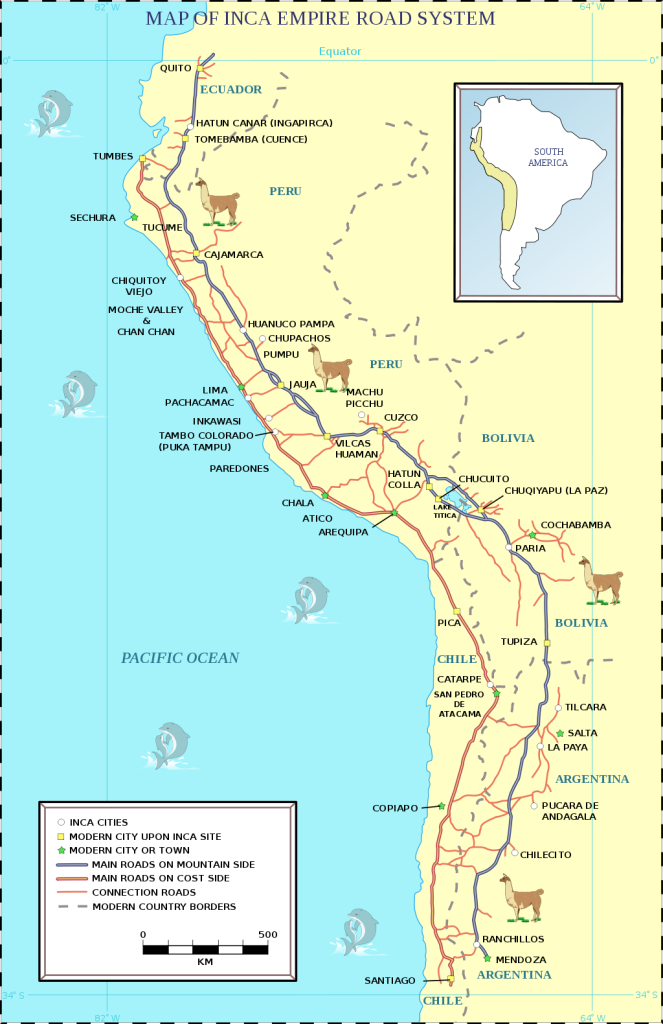
“Some sections are thousands of years old as Arequipa continued to play its role in integrating diverse village. Many of these still have no roads,” he stressed.
The design of Qhapac Nan, linking a total of six countries in Latin America, allowed the articulation of a great Tahuantinsuyo [Inca Empire] with transverse and longitudinal paths, where products from the coast, highlands and jungle were transported.
Part of that roadway is the 22 miles of a new section of roadway linking the towns of Chala and Acari, which was discovered by a technical group from the Qhapac Nan Project, of the Ministry of Culture.
This section crosses desert areas and coastal hills , between kilometers 591 and 625 of the South Pan American Highway, in the districts of Chala and Atiquipa.
The Qhapac Nan research coordinator, Guido Casaverde, said preliminary investigations indicate that this stretch of roadway came from the north from the Inca administrative center of Tambo Viejo (Acari) and south to the site of the Tambo (house), connecting the archaeological sites of La Caleta, La Quebrada de Vaca (Puerto Inca) , Quebrada Mocha and Tanaca.
Note:
The Qhapac Nan Project is currently working on having the [remaining] Inca highway designated as a World Heritage Site. During that effort, the project has discovered several new routes.
Date:
Its construction would have occurred in the Late Horizon period, during which the Incas achieved the maximum expansion of their empire.
Excerpt from the Spanish historian, Bernabe Cobo (1582-1657), from History of the Inca Empire:
“The Incas also used the [chaski] runner and messengers when they felt like having something especially delicious that needed to be brought from far away; if, while he was in Cuzco, the Inca [emperor] felt a desire for some fresh fish from the sea, his order was acted upon with such speed that, although that city is over seventy leagues from the sea, the fish was brought to him very fresh in less than two days…the post service of the chasques was held to be one of the great accomplishments of the Inca kings….”
Royal Pre-Inca Tomb Discovered With Thousand-Year-Old Wari Queens
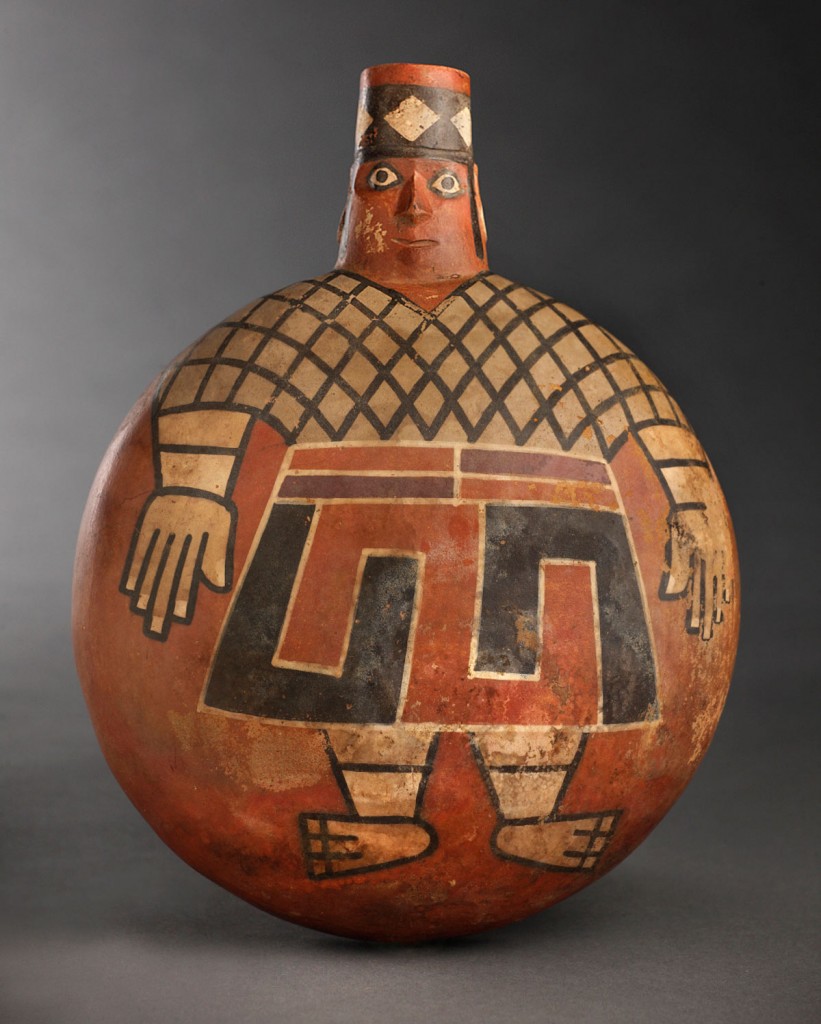
A 1,200-year-old ceramic painted with a Wari lord, recently discovered at the tomb of El Castillo de Huarmey in Peru
First Unlooted Royal Tomb of Its Kind Unearthed in Peru
Three queens were buried with golden treasures, human sacrifices.
National Geographic
Published June 27, 2013
It was a stunning discovery: the first unlooted imperial tomb of the Wari, the ancient civilization that built South America’s earliest empire between 700 and 1000 A.D. Yet it wasn’t happiness that Milosz Giersz felt when he first glimpsed gold in the dim recesses of the burial chamber in northern Peru.
(more…)
Mysterious Lines Explained in Peru’s Nazca Desert
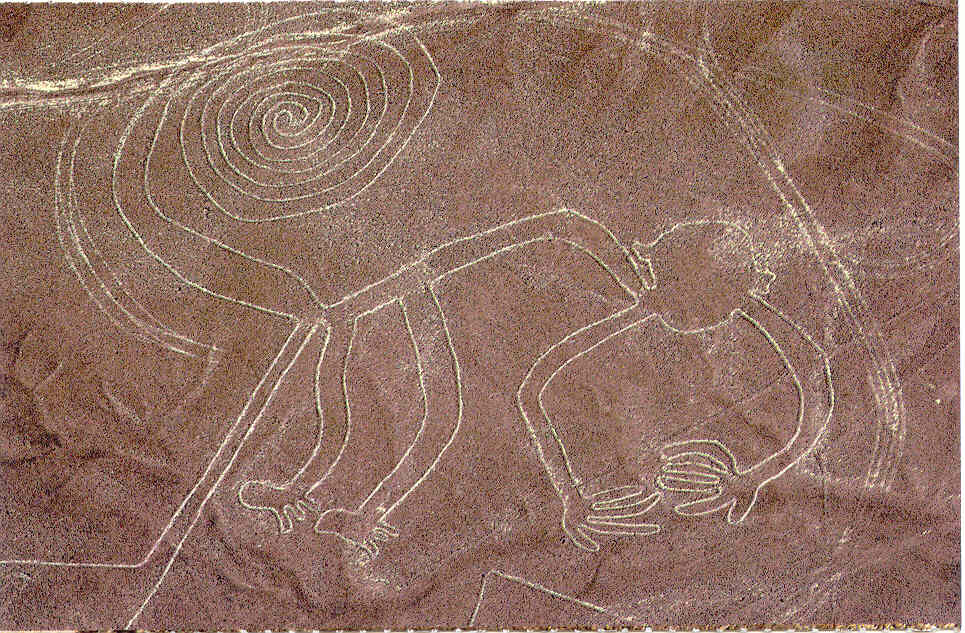
Labyrinth Lies Within Mysterious Desert Drawing
Dec 11, 2012
Discovery.com
A large labyrinth lies in the midst of Peru’s Nazca Lines, according to the most detailed study on the enigmatic desert etchings created between 2,100 and 1,300 years ago.
Completely hidden in the flat and featureless landscape, the labyrinth was identified after a five-year investigation into the arid Peruvian coastal plain land, about 250 miles south of Lima, where the mysterious geoglyphs are located.
(more…)
Yale At Last Returns Final Machu Picchu Artifacts to Peru
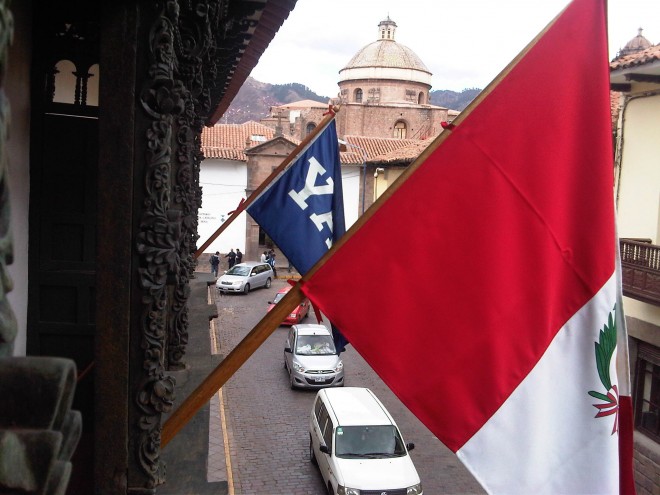
Yale University’s and Peru’s flags flying in front of the Casa Concha Museum in Cusco, Peru
Nov 12, 2012
Yale Daily News
Earlier today, Yale quietly returned the third and final batch of thousands of Machu Picchu artifacts to Peru, marking an end to the years-long dispute between Peru and Yale that led to a lawsuit four years ago.
The touchdown of today’s 127-box shipment was the final of three deliveries, which was financed by Yale. The University shipped the first fraction of the artifacts in March 2011 and the second last December. Yale and Peru resolved the lawsuit in November 2010, when the University agreed to return the pottery shards and other artifacts that Yale archaeologist Hiram Bingham III recovered during trips to Machu Picchu between 1911 and 1916. Tensions grew over the ownership of the artifacts and culminated in December 2008 when Peru sued Yale over the relics.
The dispute lasted years, garnering national media attention and responses from the Yale community.
Though the Peruvian government threatened to sue University President Richard Levin personally in 2008, Peruvian Ambassador to the United States Harold Forsyth presented Levin with the “Orden del Sol,” or the “Great Cross” grade of the Order “The Sun of Peru” last September.
Many of the artifacts are currently on display at the Casa Concha Museum in Cusco, Peru.
Climate Change May Have Led to Earliest South American Mummies

A 7,000-year-old mummy from the Chinchorro culture, along the border of Chile and Peru, whose skin, hair and clothing still remain (photos: National Geographic)
Changing Climate May Have Led To Earliest Mummies
NPR
August 15, 2012
A couple of thousand years before the Egyptians preserved some of their dead, a much simpler society made the first known mummies.
(more…)
Peru’s Amazon Highway Puts Uncontacted Tribes At Risk
New Amazon Highway ‘Would Put Peru’s Last Lost Tribes At Risk‘
Eco-campaigners clash with developers over plan to build 125-mile road through rainforest
June 30, 2012
The Observer
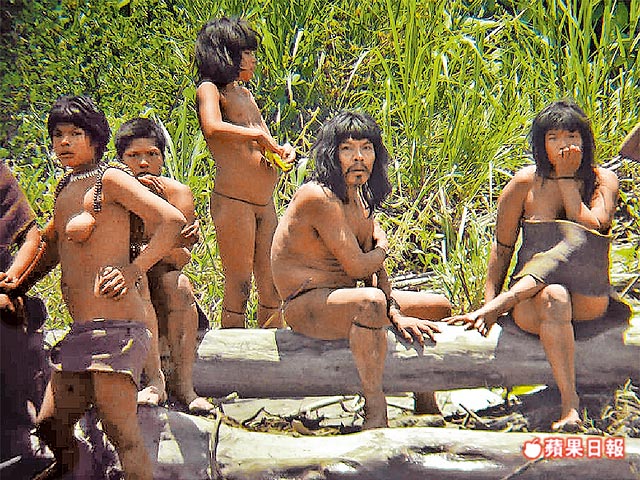
Members of the uncontacted Mashco-Piro tribe photographed through a telescope late last year
A fierce row has broken out over a controversial plan to drive a road through pristine Amazon rainforest, imperilling the future of some of the world’s last uncontacted tribes.
The 125-mile (200km) road would pass through the Alto Purús national park in Peru, connecting a remote area to the outside world but opening up the most biologically and culturally important area of the upper Amazon to logging, mining and drug trafficking. Opponents of the plan fear it will threaten the existence of uncontacted tribes such as the Mashco-Piro. The first detailed photographs of members of the tribe made headlines around the world earlier this year after they were spotted on a riverbank.
(more…)











